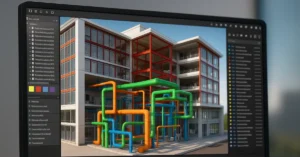Sustainability and Energy Efficiency in Villa Design: Creating Eco-Friendly Luxury

Sustainability and energy efficiency have become integral aspects of modern architecture, especially in the realm of villa design. Architects are increasingly incorporating green practices and technologies to minimize environmental impact and reduce energy consumption while still delivering luxurious living spaces. In this comprehensive guide, we’ll delve into the importance of sustainability and energy efficiency in villa construction, exploring innovative strategies and eco-friendly solutions to elevate your craft as an architect.
Understanding the Imperative: Why Sustainability Matters
Before delving into the specifics of sustainability and energy efficiency in villa design, it’s crucial to understand why these aspects are imperative in today’s architectural landscape. With growing concerns about climate change and environmental degradation, there’s a heightened focus on creating buildings that are not only aesthetically pleasing but also environmentally responsible. As architects, we have a responsibility to minimize our ecological footprint and contribute to a more sustainable future. Incorporating sustainable practices in villa design not only benefits the environment but also enhances the quality of life for occupants by promoting healthier, more comfortable living environments.
Embracing Green Design Principles
At the heart of sustainability in villa design are green design principles that prioritize environmental responsibility and resource efficiency. These principles guide architects in making conscious decisions throughout the design process, from site selection to material choices and energy systems. Key green design principles include:
- Site Optimization: Choosing sites with minimal environmental impact, optimizing solar orientation, and preserving natural features such as trees and water bodies.
- Passive Design Strategies: Incorporating passive design strategies such as proper orientation, natural ventilation, and shading to minimize reliance on mechanical heating and cooling systems.
- Energy-Efficient Systems: Implementing energy-efficient HVAC systems, lighting fixtures, and appliances to reduce energy consumption and operating costs.
- Water Conservation: Integrating water-saving fixtures, rainwater harvesting systems, and drought-resistant landscaping to minimize water usage and promote water conservation.
- Material Selection: Using sustainable building materials such as recycled materials, locally sourced materials, and low-impact materials with minimal embodied energy.
Innovative Solutions for Energy Efficiency
In addition to embracing green design principles, architects are leveraging innovative solutions to enhance energy efficiency in villa design. These solutions not only reduce energy consumption but also contribute to long-term cost savings and environmental sustainability. Some of the innovative solutions include:
- Solar Power: Integrating solar photovoltaic panels and solar water heating systems to harness renewable energy from the sun and offset electricity usage.
- Passive Solar Design: Designing villas with optimal solar orientation, strategic placement of windows, and thermal mass to maximize natural daylighting and minimize heating and cooling loads.
- High-Performance Insulation: Utilizing advanced insulation materials and techniques to minimize heat transfer through walls, roofs, and windows, improving thermal comfort and energy efficiency.
- Smart Home Technology: Incorporating smart home automation systems to optimize energy usage, monitor energy consumption, and adjust lighting, heating, and cooling systems based on occupancy and preferences.
- Green Roofs and Walls: Installing green roofs and walls with vegetation to improve insulation, mitigate urban heat island effects, and enhance biodiversity while reducing stormwater runoff.
Certifications and Standards for Sustainable Villas
To validate the sustainability and energy efficiency of villa designs, architects can pursue certifications and adhere to established standards that recognize green building practices. Certifications such as LEED (Leadership in Energy and Environmental Design) and BREEAM (Building Research Establishment Environmental Assessment Method) provide rigorous frameworks for assessing the sustainability performance of buildings and promoting best practices in design, construction, and operation. By designing villas that meet or exceed these certifications, architects can demonstrate their commitment to environmental stewardship and deliver high-performance, eco-friendly homes that benefit both occupants and the planet.
Conclusion: Shaping a Sustainable Future
In conclusion, sustainability and energy efficiency are paramount considerations in villa design, offering architects the opportunity to create environmentally responsible homes that combine luxury with eco-consciousness. By embracing green design principles, leveraging innovative solutions, and adhering to certifications and standards, architects can shape a sustainable future where villas not only provide unparalleled comfort and style but also minimize environmental impact and contribute to a healthier planet. As architects, let us continue to elevate our craft by integrating sustainability and energy efficiency into every facet of villa design, ensuring a brighter, greener future for generations to come.
Click here to gain access to the full-villa course
If you’re interested in learning more about architecture firms in Europe, check out this comprehensive list of the top 50 firms compiled by Archgyan. From innovative startups to long-established industry leaders, this list has it all. Take a look and discover some of the most inspiring and influential architecture firms in Europe today.
If you’re interested in architecture and want to learn more about this amazing field, subscribe to our podcast on youtube
For more SketchUp tutorials, head to https://www.sketchupguru.com










